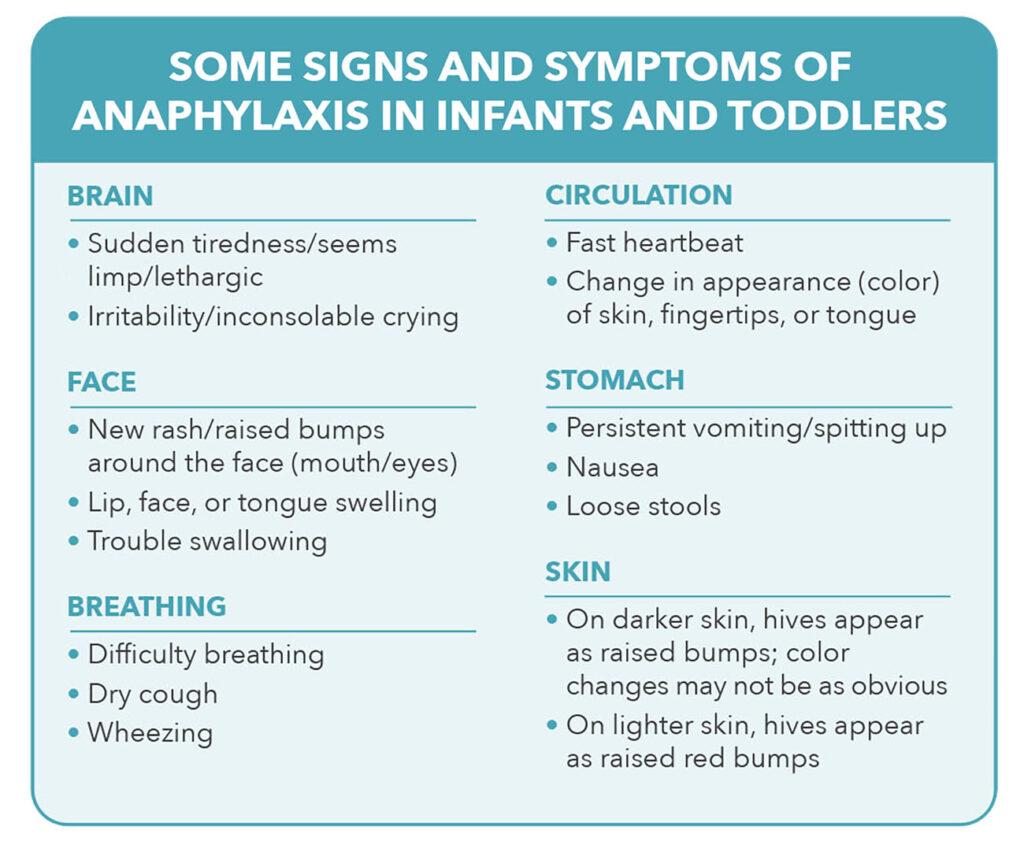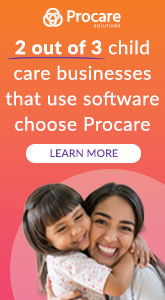A child’s first allergic reaction can happen anywhere—including in your care.
In early childcare programs, severe food allergy reactions can catch even the most attentive caregivers off guard. Yet being prepared can make all the difference.
As an allergist and food allergy educator, I work with early childhood educators who are passionate about the well-being of the children in their care but often haven’t had formal training in allergy recognition and emergency response. That’s understandable since, until recently, little guidance existed for early childhood programs. But the landscape is changing, and so is the urgency.
Understanding the Risk
Anaphylaxis—a severe allergic reaction—can happen quickly and is potentially life-threatening. Children under the age of six are the most likely age group to experience an initial reaction, yet symptoms in this age group can look different from symptoms in older children. Because young children often can’t describe how they’re feeling, early signs of a reaction may be mistaken for typical behaviors like persistent crying, eye rubbing, or regurgitation particularly after eating.
That’s why early educators must be equipped to recognize the signs of an allergic reaction—even when children can’t explain them.
Data shows that 1 in 10 anaphylaxis events in children happen in schools or childcare programs, and up to one-third of those reactions occur in children with no previously known allergies or whose allergies aren’t known by staff.
Taking Action
The Early Childhood Anaphylaxis Collaborative is a multi-disciplinary group of childcare professionals, healthcare providers, parents, and advocates focused on equipping early childcare professionals with the knowledge and tools to prevent, recognize, and respond to severe allergic reactions among young children in their care.
The group has developed clear, actionable guidance to help early learning centers like yours improve readiness:
1. Establish an Anaphylaxis Response Plan
Every early childhood program should have an Anaphylaxis Response Plan that clearly outlines how to recognize a severe allergic reaction and the steps staff should take during the emergency. While children with diagnosed food allergies often have individual anaphylaxis action plans, one study found that 1 in 7 do not have one on file with their childcare provider. And importantly, reactions can also occur in children with no known history of food allergies or whose allergies are not yet identified. That’s why it’s essential for programs to have a center-wide response plan in place—for all children, not just those with known allergies.
2. Educate staff to recognize the signs and symptoms of anaphylaxis
While general awareness of food allergies has grown, many people don’t realize that the signs of anaphylaxis in young children can look different from those in older children. Symptoms in infants and toddlers can resemble other common behaviors in children, such as regurgitation or loose stools after feeding. Also, young children may not be able to articulate their symptoms, which can delay recognition of the reaction. It’s critical for early childcare professionals to be aware of symptoms in young children, and if anaphylaxis is suspected, to promptly administer epinephrine.

Image from the Early Childhood Anaphylaxis Collaborative materials, which are available at no cost when you join the Collaborative.
3. Train staff to treat anaphylaxis with epinephrine
All staff should be trained to recognize when epinephrine is needed and how to use it. Epinephrine is the only first-line treatment for anaphylaxis, and because severe allergic reactions can progress quickly—often before emergency medical services arrive—early childcare staff need to be prepared to respond immediately. Training should also cover choosing the correct weight-appropriate dose.
4. Stock undesignated epinephrine that can be used to treat in any child
Undesignated epinephrine is epinephrine that is not prescribed for any one child but is kept on-hand at the center to treat any person having anaphylaxis. It is also important to stock appropriate weight-based doses of undesignated epinephrine to ensure there is a device available for all children within the weight ranges indicated for epinephrine devices. Many states now have laws that allow or encourage early childcare centers to stock undesignated epinephrine for use in an allergic emergency.
Because legislation is different across the country, there are various considerations when determining how to stock undesignated epinephrine and what type of epinephrine device to stock:
![]()
These considerations may feel overwhelming or pose the question of how to even start. The Collaborative is here to help by providing tailored educational content around the topic, access to vetted anaphylaxis training, information on how to access undesignated stock epinephrine, and the opportunity to engage with other professionals about this important topic – learning from one another to start making a difference.
Join at www.ecacollaborative.com to receive access to resources and support and to help ensure you and your team are prepared in case of an allergic emergency.
© 2025 kaléo, Inc. CM-US–0447. All rights reserved
Alice Hoyt, M.D., F.A.A.A.A.I., Chief Allergist at the Hoyt Institute of Food Allergy, Chair of Code Ana, and Founding Partner of the Early Childhood Anaphylaxis Collaborative
Dr. Alice Hoyt has been practicing academic, evidence-based medicine for over a decade. Prior to medical school, she earned a degree in nutrition. She then completed training and earned board-certifications in internal medicine, pediatrics, and allergy & immunology.
During her fellowship at the University of Virginia, she launched the now national allergy-focused non-profit organization Code Ana. At Vanderbilt University, she continued her food allergy-focused efforts before transitioning to Cleveland Clinic, where she helped launch its Food Allergy Center of Excellence.
In addition to leading the Hoyt Institute of Food Allergy, Dr. Hoyt hosts the top-ranked food allergy podcast Food Allergy and Your Kiddo, chairs Code Ana, and is an Advisory Partner for the Early Childhood Anaphylaxis Collaborative. Dr. Hoyt is also a paid advisor for Kaléo.
Related
ADVERTISEMENT










